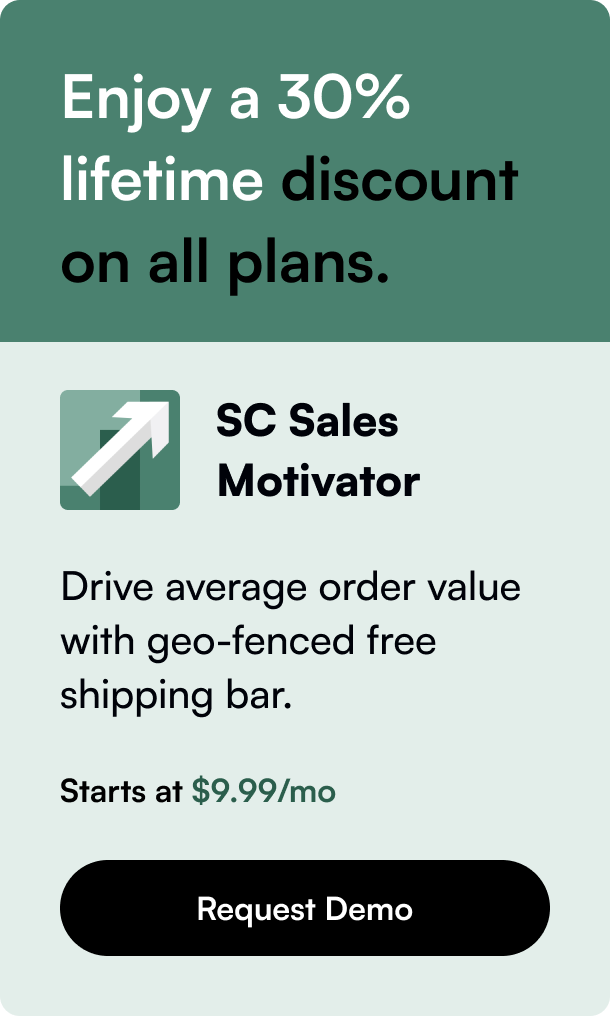Table of Contents
- Introduction
- Why Tagging Matters
- Getting Started with Product Tags
- Advanced Tagging Strategies
- Wrapping Up
- Frequently Asked Questions
Introduction
Did you know that the simple act of adding tags to your Shopify products can significantly enhance the browsing experience for your customers and streamline your inventory management? In the bustling digital storefronts of today, ensuring that your products are easily discoverable and well-organized is not just an advantage; it’s a necessity. This blog post dives deep into the mechanics of adding tags to your Shopify products, a feature that, while seemingly straightforward, holds the potential to vastly improve how you manage and present your offerings.
Whether you're a seasoned Shopify veteran looking to refine your store’s organization or a newcomer eager to set up your shop for success from the get-go, understanding the ins and outs of product tagging is essential. By the end of this read, you'll not only grasp the how-tos but also the why's of leveraging tags effectively, ensuring your e-commerce venture stands out in a sea of competition.
Why Tagging Matters
Beyond mere organization, tags in Shopify serve a variety of strategic purposes. They enable store owners to filter and categorize products in ways that enhance consumer navigation and streamline backend product management. From grouping seasonal items for bulk actions to improving search functionality, tagging is a fundamental but powerful tool in your Shopify arsenal.
Getting Started with Product Tags
Creating and Organizing Tags
Shopify allows for a custom set of tags for each section (products, orders, blog posts, etc.), giving you the flexibility to organize each aspect of your store as you see fit. It's imperative to approach tagging with a strategy in mind, considering how your customers search for products and how you manage your inventory.
When adding a new product or editing an existing one, you'll find the option to add tags under the "Organization" section. This simplicity in Shopify design belies the depth of tagging's utility. For each tag, consider aspects like product attributes, seasonal relevance, promotions, or product types.
Best Practices for Tag Creation
- Consistency is Key: Consistently formatted tags (capitalization, spacing, etc.) ensure a smoother experience both on the frontend for customers and the backend for management.
- Strategic Tagging: Use tags that are relevant and descriptive. For example, tagging a product with "Summer" and "Beachwear" is more beneficial than vague tags like "Nice" or "Popular."
- Avoid Over-tagging: While Shopify Plus accounts can have unlimited tags, it’s best to use the minimum number of tags needed to describe each product accurately. This approach maintains clarity and prevents the backend from becoming cluttered.
Editing Theme Code for Enhanced Tag Display
Some store owners might want to customize how tags are displayed to customers, such as showcasing them on product pages or linking them to relevant collections. This requires editing your Shopify theme's code. Always start by duplicating your theme to prevent any disruptions to your live store. Then, navigate to "Online Store" > "Themes" > "Actions" > "Edit code."
A common request is to display product tags as clickable links that lead to collections of similarly tagged items. This enhances the shopping experience by seamlessly guiding customers through related products.
For precise instructions, Shopify’s community forums and documentation are invaluable resources. However, adding code snippets for custom tag displays involves inserting loops through the product tags in your product-template.liquid file and styling them according to your brand’s aesthetics.
Dealing with Common Tagging Challenges
- Tags with Spaces: Tags that include spaces need special attention when creating URL links. Replacing spaces with dashes (-) when constructing links ensures they lead to the correct collection pages.
- Bulk Tagging: For large inventories, adding or editing tags one by one is impractical. Utilize Shopify's bulk action features to efficiently manage tags across multiple products.
- Search and Filter Applications: Tags significantly improve the searchability of products. Incorporate tag-based filtering in your store’s search functionality to help customers find exactly what they’re looking for.
Advanced Tagging Strategies
Leveraging Shopify’s API and third-party apps can take tagging to the next level, such as creating automated workflows that tag products based on specific criteria or sales data. Exploring these avenues can unlock dynamic ways to categorize and promote products based on customer behavior and sales trends.
Wrapping Up
The seemingly simple feature of adding tags to your Shopify products holds profound implications for both store organization and customer experience. By implementing the strategies discussed, you can ensure your products are not only easier to manage but also easier for your customers to find and buy.
Whether through manually curated tags, utilizing Shopify's bulk actions, or diving into code for custom display solutions, the power of tagging is clear. Implement these practices to unlock the full potential of your Shopify store, ensuring it’s organized, navigable, and primed for sales success.
Frequently Asked Questions
1. Can I use tags to automatically hide or show products for certain seasons or promotions?
Yes, tags can be used in conjunction with automated collections or bulk actions to hide or show products based on seasonality, promotions, and more.
2. Is it possible to have too many tags?
While Shopify Plus stores can have unlimited tags, it's best practice to use tags judiciously to keep your store organized and prevent tags from becoming unmanageable.
3. How do tags affect SEO?
While tags themselves don't directly affect SEO, they can improve site navigation and the customer experience, indirectly boosting SEO by reducing bounce rates and enhancing engagement.
4. Can customers see and use tags?
Customers can see tags if you choose to display them on product pages or use them for collections and filtering. This can enhance the shopping experience by making it easier for customers to find related products.
5. Can I bulk edit tags?
Yes, Shopify allows you to add or remove tags in bulk through the admin interface, simplifying the process for stores with large inventories.








